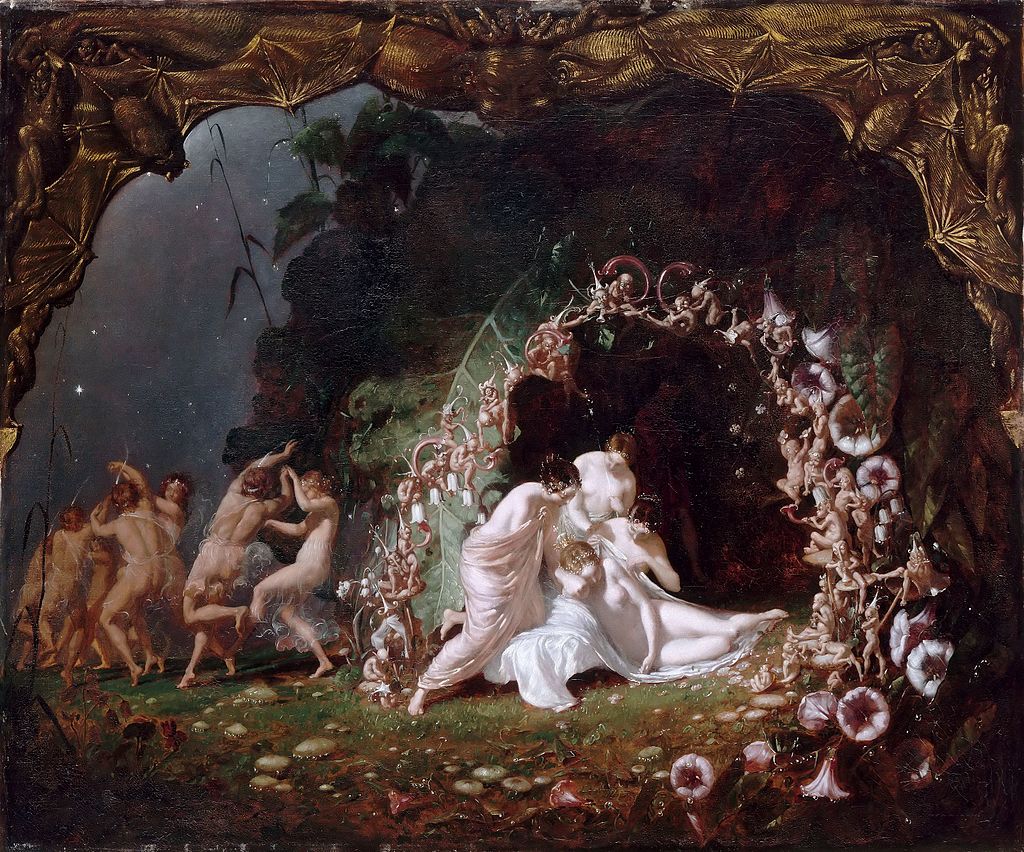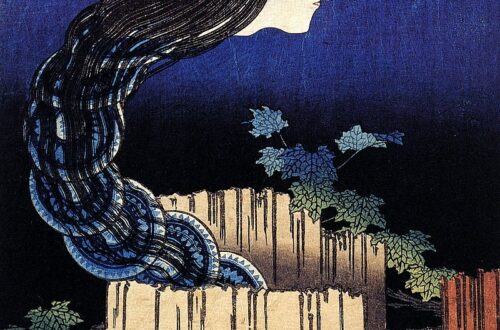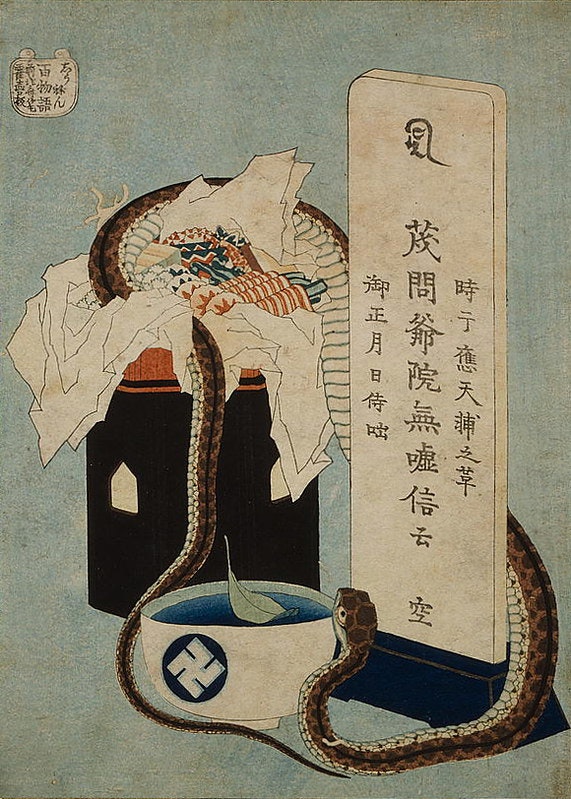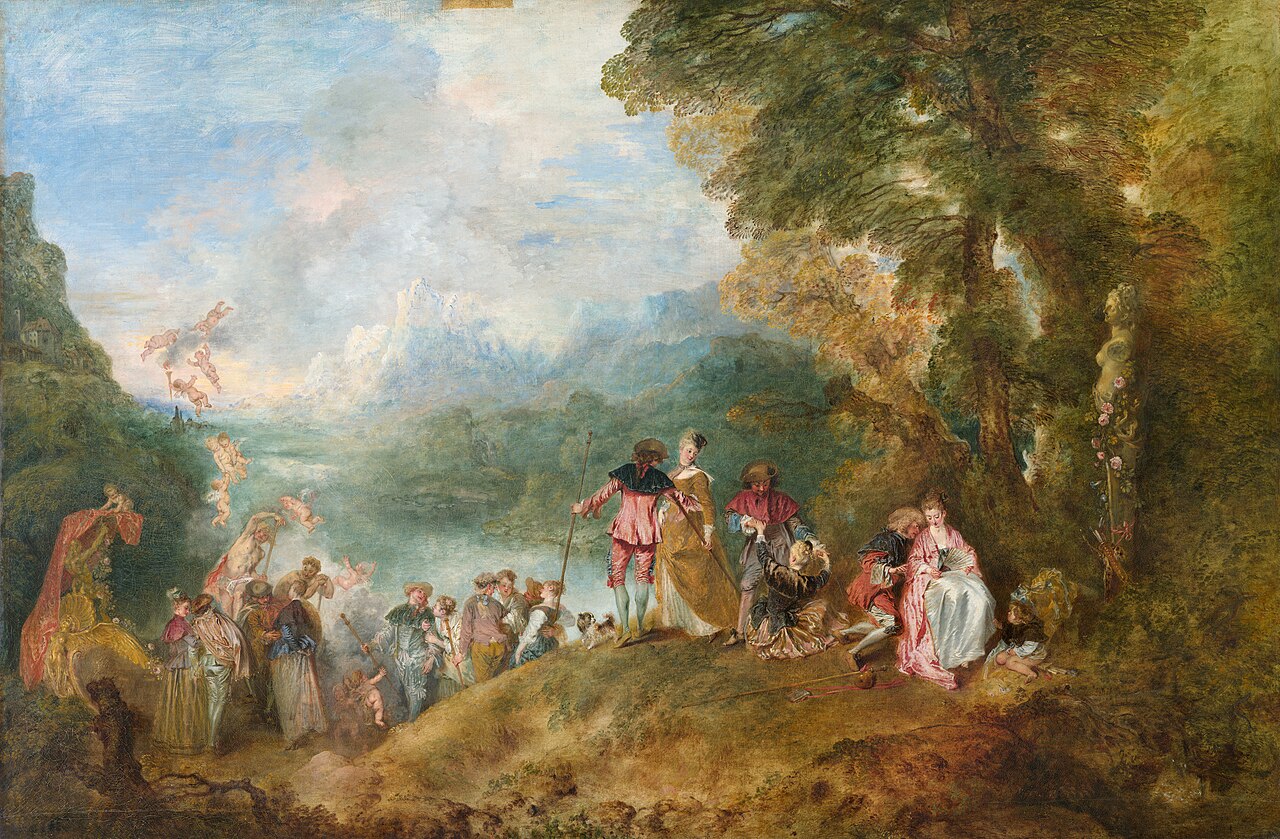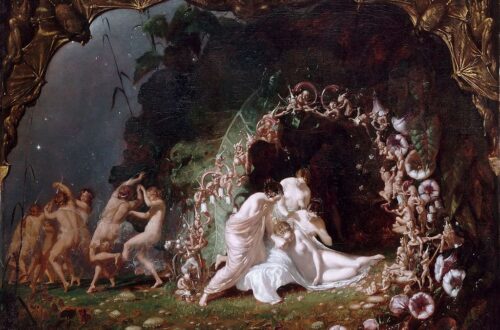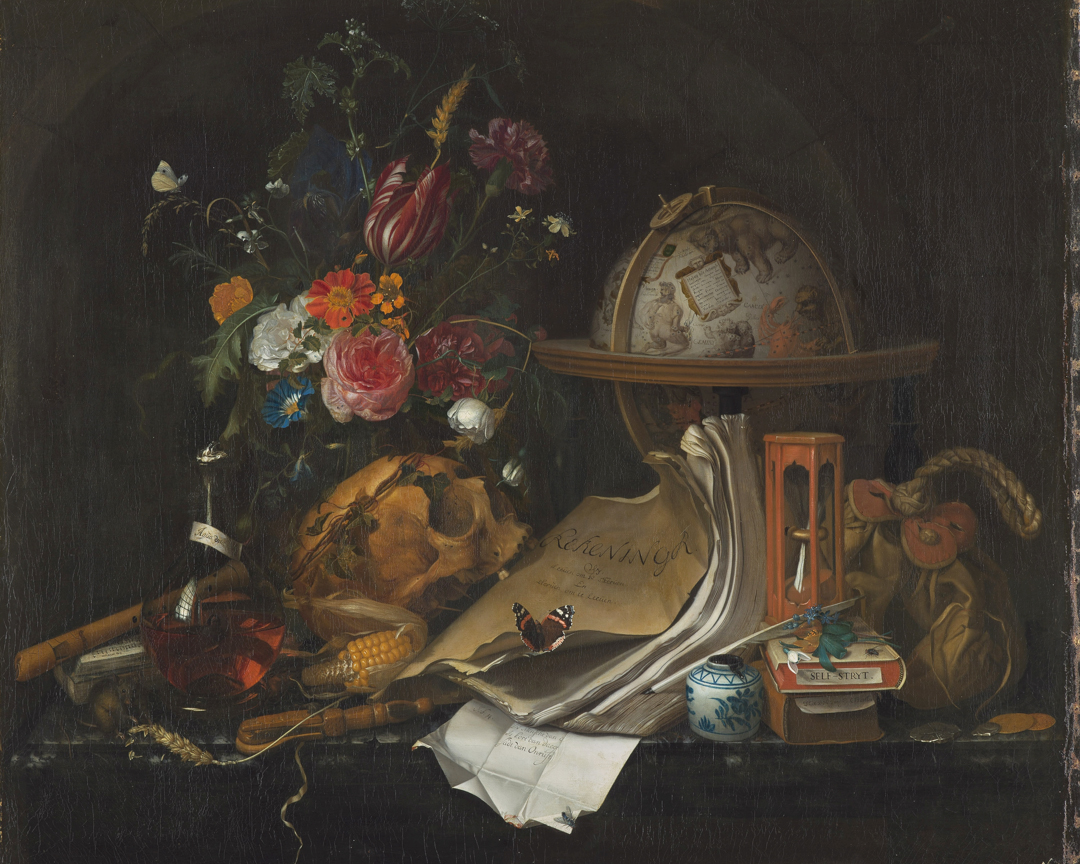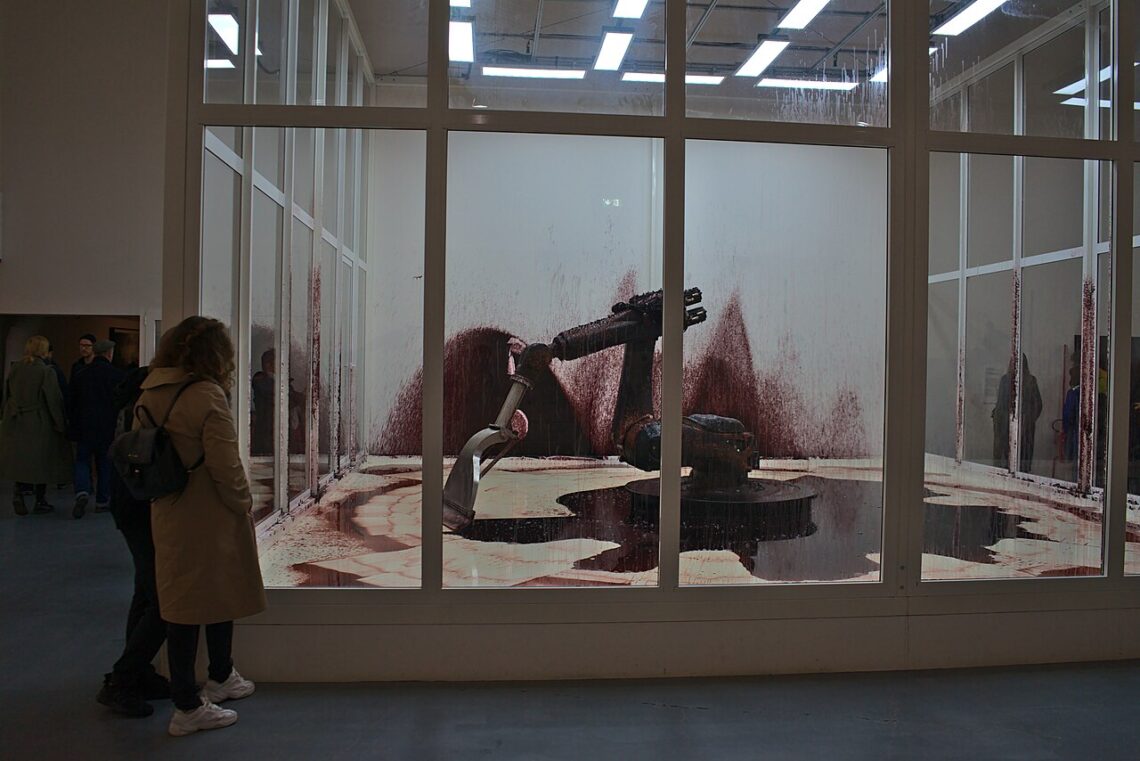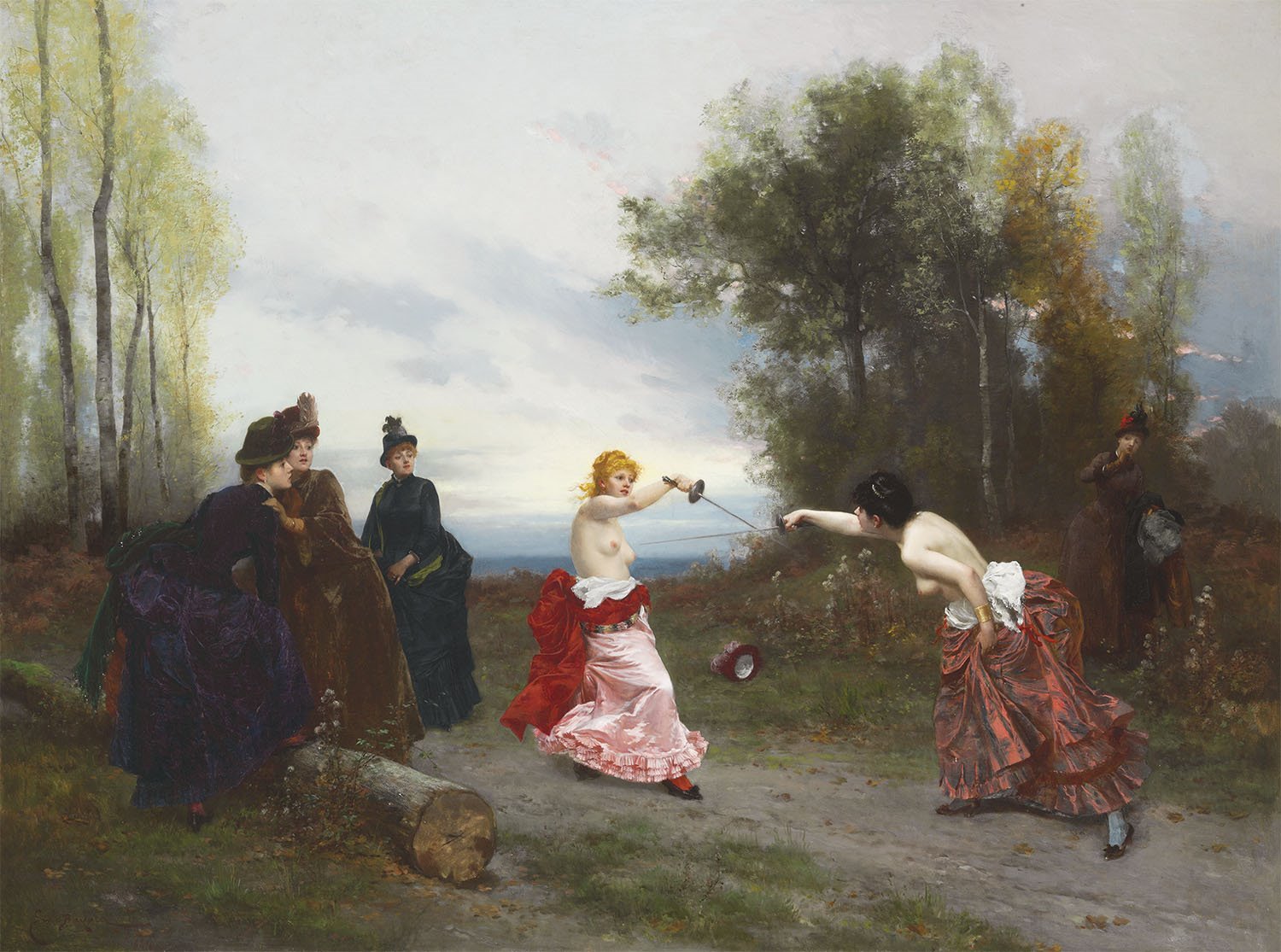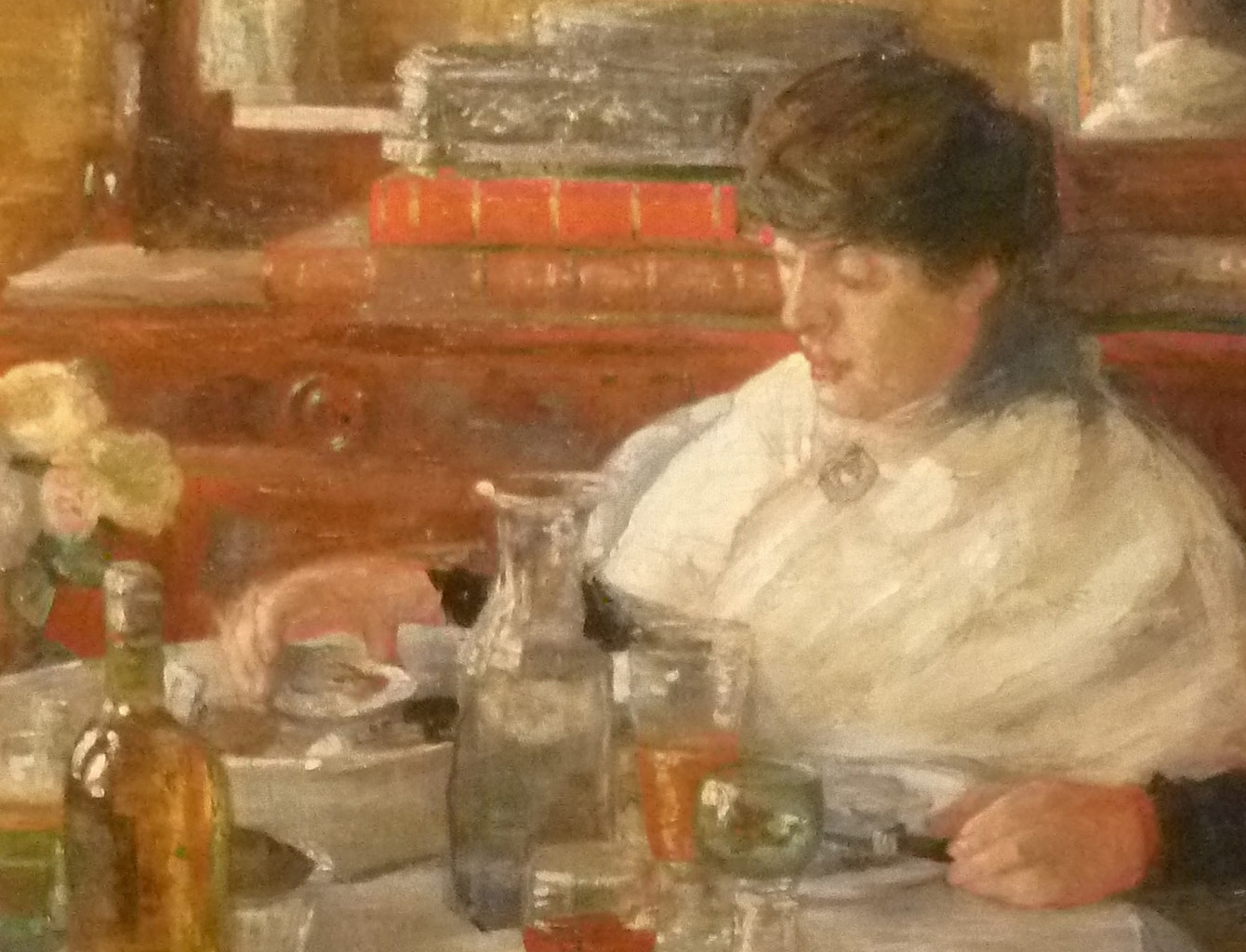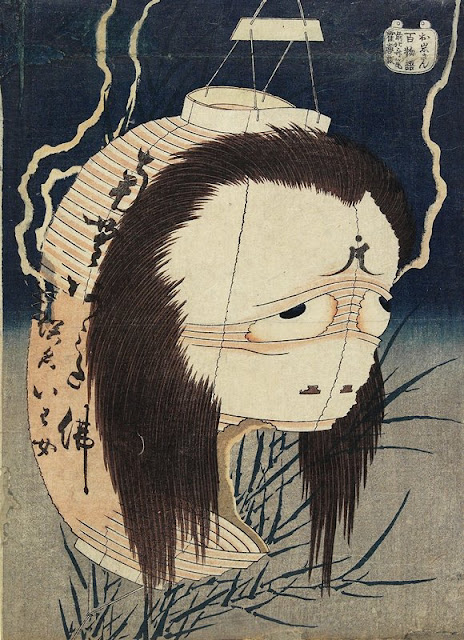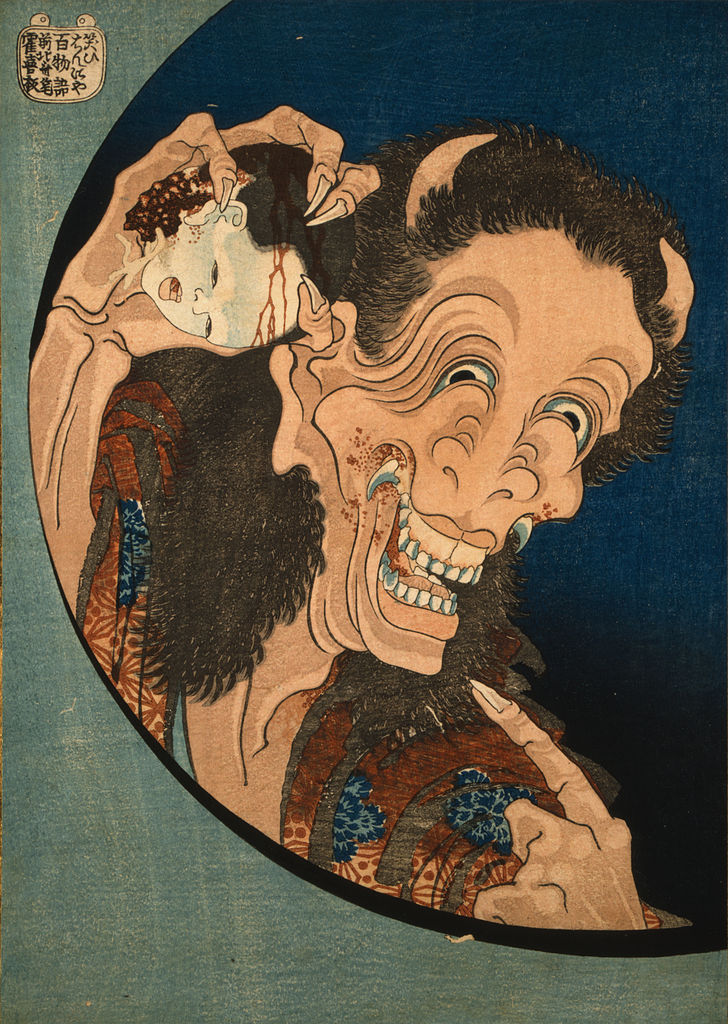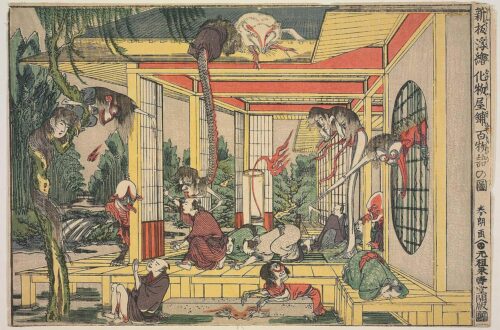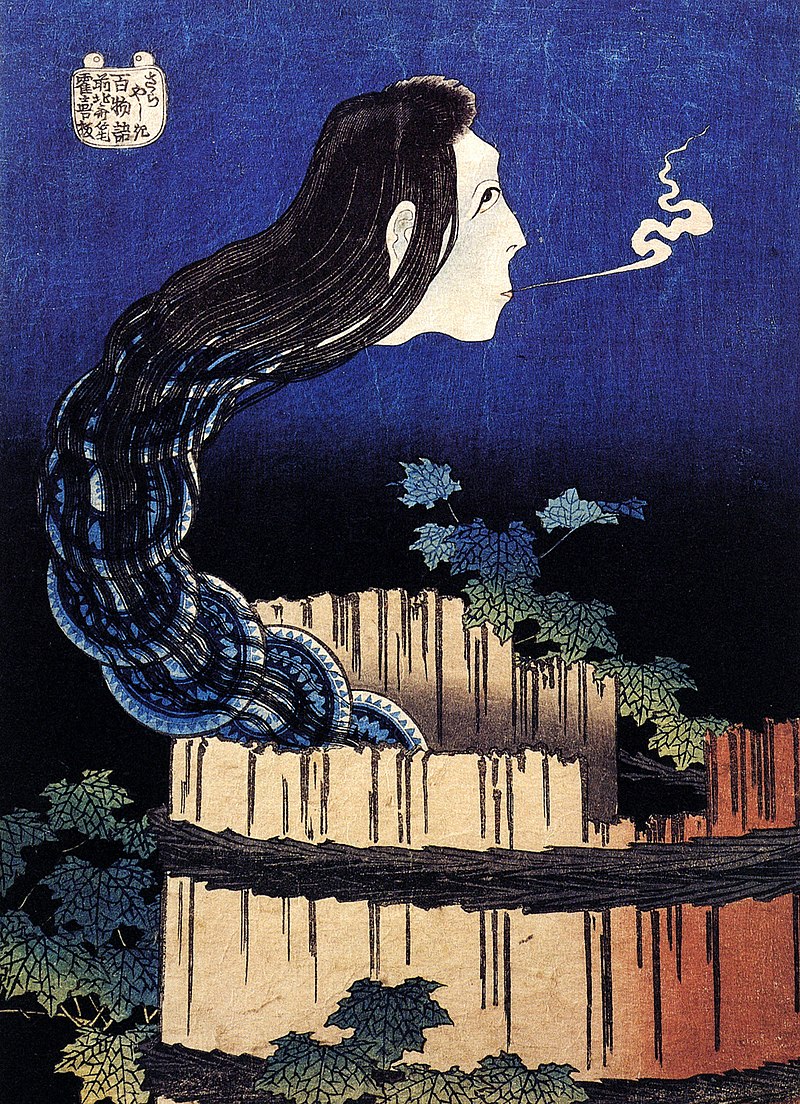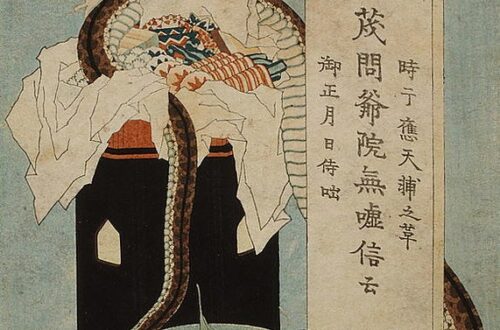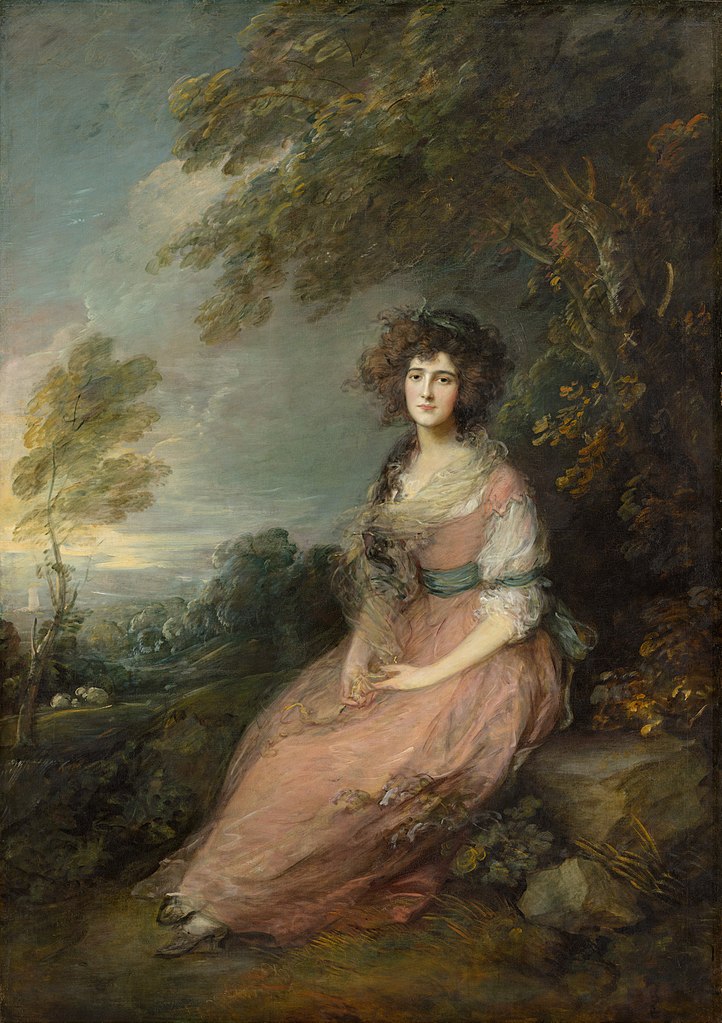-
About fairies, Part 1
As always, the first thing I do when I research a new topic is to turn to Wikipedia. Today is not different. I had the idea to talk about fairies. It is Novembre, while creepy season is officially over but let’s be real: the spooky vibes are still strong! So I thought that I’ll write about some harmless and fun supernatural topic before I turn to serious art stuff. Als always I found out that there is a lot (and I mean A LOT!) more to learn about fairies than I anticipated. I also found out that fairies were not always seen as some harmless and fun entities. In fact,…
-
One Hundred Ghost Stories Plate V:
Obsession (Shûnen) In this print, which was also called „Implacable Malevolence“ you can see a snake, wrapped around a memorial tablet, an ihai, for a Buddhist altar. The picture is much more confusing than the other ones. While the other prints show stories and can be seen as illustrations or interpretations, the Shûnen is a bit more complex. Here we see a picture that is different from the other four. In front of a light blue-grey background we can see a snake that wraps itself around a container with food on top, an upright standing tablet and a japanese tea cup, filled with water and a tea leaf. The snake…
-
One Hundred Ghost Stories Part V:Plate IV:
The Ghost of Kohada Koheiji (Kohada Koheiji) This print illustrates a tale about a man who was drowned in a Swamp by his wife and her lover: Kohada Koheiji, a Yōkai, was once a real man. It is believed that he lived in the Edo period. He was a Kabuki actor for the Morita-za theatre but he was unable to get any roles as he was hideous to look at. The only role he could get was the one of a yurei, a ghost, in a theatre in the countryside where the audiences were less demanding than in the city. Believing that this was his last chance as an actor…
-
Can’t help myself
Can’t help myself by SUN Yuan 孙 原 & PENG Yu 彭 禹 It is really difficult to create a connection between art and the viewer. The greatest masterpieces of art do it seemingly effortlessly while others struggle to create a connection regardless of the skill of the artist. Especially nowadays we are flooded with AI-”art” which, in my eyes, are soulless pictures, thrown together without sense and intent and, worse, which attribute to visual dilapidation. Anyways, as I said, it is difficult to create a meaningful connection. It is even more remarkable if the art piece in question doesn’t have a human form or even the shape of a…
-
One Hundred Ghost Stories Plate III: The Ghost of Oiwa
The Ghost of Oiwa (Oiwa-san) The third print shows the “Ghost of Oiwa“. The story of Oiwa originally was a play for the traditional Kabuki-theatre called Yotsuya Kaidan, written by Tsuruya Nanboku IV in 1825. The most popular version is the one where a young girl named Oume falls in love with Tamiya Iemon, a rōnin who is married to his wife called Oiwa. Oume’s friends try to get rid of the wife by gifting her a poisonous face cream which ruins her face. Tamya lemon abandons his wife in disgust because her beauty is destroyed and she is a hideous sight. His actions drive her insane. In her rage…
-
One Hundred Ghost Stories Plate II:
The Laughing Hannya (Warai-hannya) The second of Hokusai’s prints shows two different monsters that appear in an unholy union: a hannya (般若), which is a vengeful female demon, and a yamanba (山姥 or 山うば) or Yama Uba or Yamamba, a fairy of the mountains. The Hannya, which is not only part of the stories of the Hyakumonogatari Kaidankai but also a traditional character in the Nō-theatre, embodies jealousy and anger. Long, long time ago she was said to be an ordinary woman with beautiful eyes. She was deeply hurt by a man she loved so she lost her spirit in the darkness and transformed into a vengeful demon who attacked…
-
One Hundred Ghost Stories Plate I:
The Hakumonogatari Kaidankai inspired lots of artists, among them one particularly famous japanese artist: Master Katsushika Hokusai (1760 – 1849). He created five woodblock prints based on the traditional tales of the Yakumonogatari Kaidankai. We will never know why he created only five prints. I am a bit sad about it and would have loved to see more of them because they are fascinating. But it is what it is. The Mansion of the Plates (Sara-yashiki) Hokusai created the first of the series after the Edo version of an old ghost story in Kabuki plays, the Banchō Sarayashiki (番町皿屋敷, The Dish Mansion at Banchō). „The story of the death of Okiku (お菊)…
-
Hokusai’s Ghost stories, Part 1
Hyakumonogatari Kaidankai: A Gathering of One Hundred Supernatural Tales Let us enter the spooky season with some Hyakumonogatari Kaidankai (百物語怪談会) which can be translated as : „A Gathering of One Hundred Supernatural Tales„. It is a buddhist-inspired game that was invented during the Edo-Period in Japan. The exact origins are unknown: It could be invented by the Samurai as a test of courage and is traditionally played in the summer season. Before you continue to read, please consider that I only have 0.01% knowledge about Japanese art, Japanese traditions, Japanese history, or language. I have to rely on websites in English and German that may or may not be 100%…
-
Watteau’s Embarkation to Cythera
„Art for Art’s sake means, for its adepts: the pursuit of pure beauty without any other preoccupation. That is-the slenderest kind of an idea, or no idea at all; no purpose, as Lessing suggests, of any kind; no sentiment or thought-simply beauty of composition and of craftsmanship. Well, in Watteau’s picture we have this mediocre aim realised most cleverly.“ (1) If we look at the painting in question it sure seems that way but in my opinion Arbiter underestimates Watteau’s masterpiece. Let us have a look on Watteau’s recognition piece for the academy from 1717. The first version of the „Embarkation to Cythera“ was created in 1710 which is now in…
-
James Ensor, Oyster Eaters
Let’s talk about James Ensor’s Oyster Eater today. James Ensor is one of the most important Belgian painters of the late 19th and early 20th century. His paintings were considered scandalous during the 19th century. The Belgian art critic Octave Maus wrote about his work: “Ensor is the leader of a clan. Ensor is the limelight. Ensor sums up and concentrates certain principles which are considered to be anarchistic. In short, Ensor is a dangerous person who has great changes. … He is consequently marked for blows. It is at him that all the harquebuses are aimed. It is on his head that are dumped the most aromatic containers of the…
